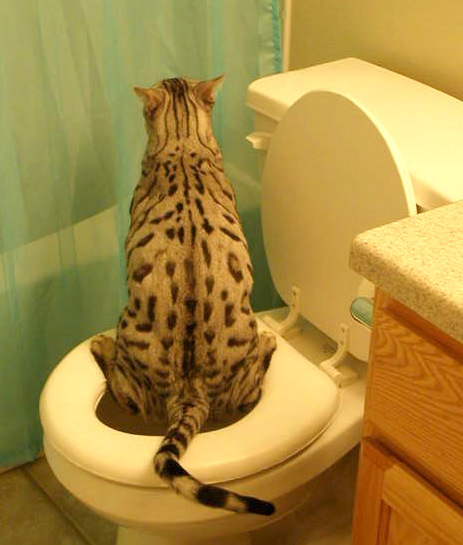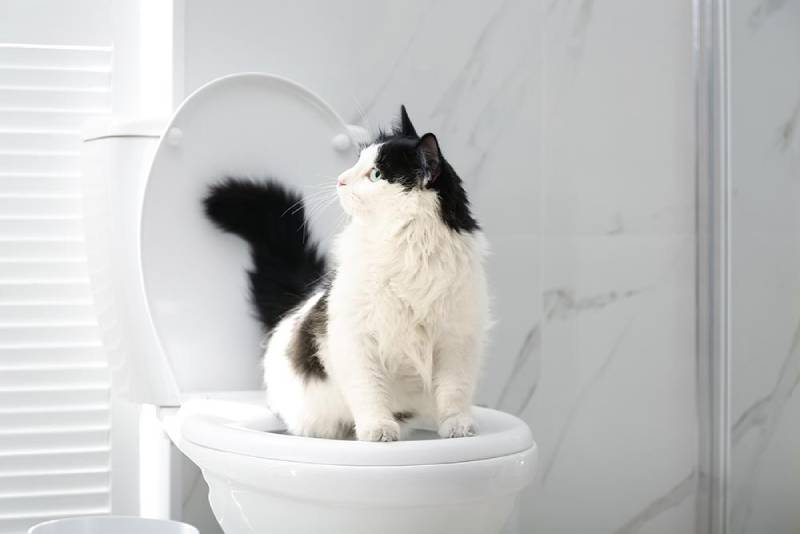Never Flush Cat Poop Down Your Toilet - Protect Your Plumbing System
Never Flush Cat Poop Down Your Toilet - Protect Your Plumbing System
Blog Article
The article listed below relating to How to Dispose of Cat Poop and Litter Without Plastic Bags is fairly enjoyable. Give it a try and draw your own ideas.

Intro
As feline proprietors, it's vital to be mindful of exactly how we take care of our feline friends' waste. While it might seem practical to purge feline poop down the toilet, this method can have destructive repercussions for both the setting and human health and wellness.
Alternatives to Flushing
Fortunately, there are much safer and much more accountable means to take care of cat poop. Take into consideration the complying with alternatives:
1. Scoop and Dispose in Trash
The most common approach of throwing away pet cat poop is to scoop it right into a biodegradable bag and throw it in the trash. Make certain to utilize a committed trash inside story and get rid of the waste promptly.
2. Use Biodegradable Litter
Go with eco-friendly cat clutter made from products such as corn or wheat. These litters are eco-friendly and can be safely disposed of in the trash.
3. Hide in the Yard
If you have a yard, consider burying pet cat waste in a designated area far from veggie yards and water sources. Make sure to dig deep adequate to prevent contamination of groundwater.
4. Install a Pet Waste Disposal System
Purchase an animal garbage disposal system especially developed for feline waste. These systems make use of enzymes to break down the waste, reducing smell and ecological influence.
Health Risks
In addition to ecological problems, purging cat waste can likewise posture health risks to human beings. Feline feces might include Toxoplasma gondii, a parasite that can trigger toxoplasmosis-- a potentially extreme illness, especially for expectant women and people with damaged body immune systems.
Ecological Impact
Flushing cat poop presents harmful pathogens and parasites right into the supply of water, presenting a substantial threat to aquatic communities. These pollutants can negatively impact aquatic life and concession water top quality.
Conclusion
Accountable family pet ownership prolongs beyond offering food and sanctuary-- it additionally involves correct waste monitoring. By avoiding purging feline poop down the bathroom and choosing alternative disposal techniques, we can lessen our ecological impact and shield human health.
Why Can’t I Flush Cat Poop?
It Spreads a Parasite
Cats are frequently infected with a parasite called toxoplasma gondii. The parasite causes an infection called toxoplasmosis. It is usually harmless to cats. The parasite only uses cat poop as a host for its eggs. Otherwise, the cat’s immune system usually keeps the infection at low enough levels to maintain its own health. But it does not stop the develop of eggs. These eggs are tiny and surprisingly tough. They may survive for a year before they begin to grow. But that’s the problem.
Our wastewater system is not designed to deal with toxoplasmosis eggs. Instead, most eggs will flush from your toilet into sewers and wastewater management plants. After the sewage is treated for many other harmful things in it, it is typically released into local rivers, lakes, or oceans. Here, the toxoplasmosis eggs can find new hosts, including starfish, crabs, otters, and many other wildlife. For many, this is a significant risk to their health. Toxoplasmosis can also end up infecting water sources that are important for agriculture, which means our deer, pigs, and sheep can get infected too.
Is There Risk to Humans?
There can be a risk to human life from flushing cat poop down the toilet. If you do so, the parasites from your cat’s poop can end up in shellfish, game animals, or livestock. If this meat is then served raw or undercooked, the people who eat it can get sick.
In fact, according to the CDC, 40 million people in the United States are infected with toxoplasma gondii. They get it from exposure to infected seafood, or from some kind of cat poop contamination, like drinking from a stream that is contaminated or touching anything that has come into contact with cat poop. That includes just cleaning a cat litter box.
Most people who get infected with these parasites will not develop any symptoms. However, for pregnant women or for those with compromised immune systems, the parasite can cause severe health problems.
How to Handle Cat Poop
The best way to handle cat poop is actually to clean the box more often. The eggs that the parasite sheds will not become active until one to five days after the cat poops. That means that if you clean daily, you’re much less likely to come into direct contact with infectious eggs.
That said, always dispose of cat poop in the garbage and not down the toilet. Wash your hands before and after you clean the litter box, and bring the bag of poop right outside to your garbage bins.
https://trenchlesssolutionsusa.com/why-cant-i-flush-cat-poop/

I have been very curious about How to Dispose of Cat Poop and Litter Without Plastic Bags and I'm hoping you enjoyed the blog post. Sharing is caring. You just don't know, you could be helping someone out. We love reading our article about How to Dispose of Cat Poop and Litter Without Plastic Bags.
View More Report this page